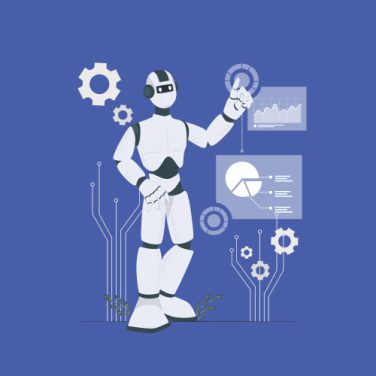An HRIS, or Human Resources Information System, centralises employee records, automates core processes, and has evolved from basic data repositories into comprehensive HCM suites.
Initially adopted for digital record-keeping and static reporting, modern platforms now integrate payroll processing, benefits administration, time and attendance management, and strategic analytics.
Integrated reporting modules facilitate audit trails and regulatory compliance while providing real-time visibility across the organisation.
Organisations of any size rely on HRIS to elevate HR efficiency and drive data-driven decision making. Real-time data consolidation eliminates manual errors and streamlines compliance reporting across multiple jurisdictions.
As teams scale or operate in different states or countries, the system’s scalable architecture and automated workflows reduce administrative overhead. Centralised dashboards provide instant insight into headcount changes, benefits utilisation, and workforce costs.
Beyond immediate operational gains, HRIS platforms support strategic planning by delivering actionable insights into workforce trends, headcount forecasting, and performance metrics. Advanced analytics tools help HR leaders identify turnover drivers, predict training needs, and optimise talent pipelines.
By aligning human capital initiatives with business objectives, HRIS transforms HR from an administrative function into a strategic partner, showcasing the benefits of human resource information system at every level.
Evolution of HRIS from on-premise to cloud
- 1980s: Standalone HR databases for digital record-keeping
- 1990s: Client-server systems hosting on-premise HR applications
- 2000s: Web-based portals enabling remote access to employee data
- 2010s: Cloud-native HRIS with real-time updates and seamless integrations
- 2020s: AI-driven platforms offering predictive analytics and proactive workforce planning
MiHCM delivers a modular HRIS solution that scales with business needs. MiHCM Lite handles core HR functions and automated compliance updates, while MiHCM Enterprise extends workflow automation and security controls. MiHCM Data & AI and SmartAssist offer analytics and proactive insights.
This end-to-end suite delivers operational efficiency, cost savings, improved self-service, and strategic data-driven decision making in one integrated environment. For additional context, refer to our comprehensive guide on human resources information systems.
Comparing HRIS, HRMS, and HCM
- A HRIS handles core employee data management, payroll processing, benefits administration, and time tracking.
- An HRMS builds on these features by adding recruiting, onboarding, and performance management.
- HCM platforms deliver a comprehensive approach that includes learning management, succession planning, and strategic workforce analytics.
- Small businesses typically implement HRIS to centralise records, automate basic workflows, and elevate HR efficiency with minimal investment.
- Mid-market companies often adopt HRMS to support talent acquisition, performance reviews, and learning initiatives.
- Global enterprises turn to HCM suites to integrate HR, finance, and global compliance, ensuring consistency across multiple regions while enabling data-driven decision making at scale.
| Platform | Core Scope | Ideal For |
|---|---|---|
| HRIS | Employee records, payroll, benefits | Small to mid-sized businesses |
| HRMS | Core data + talent acquisition, onboarding | Mid-market companies |
| HCM | Full lifecycle: HRIS + LMS + succession planning | Global enterprises |
Efficiency and automation with HRIS
Automating routine HR tasks through an HRIS can dramatically reduce administrative effort and accelerate processes.
Functions such as payroll calculations, time and attendance tracking, benefits enrolment, and leave approvals traditionally involve manual data entry, error-prone spreadsheets, and follow-up emails. By implementing automated workflows, HR teams eliminate redundant steps, track progress in real time, and deliver a consistent, auditable process.
Automated notifications and escalation rules ensured timely responses, while a centralised dashboard provided HR managers with full visibility into process status and bottlenecks.
Workflow automation in MiHCM
- Automated payroll processing with built-in checks
- Self-service time-off requests and approvals
- Dynamic benefits enrolment flows
- Expense report routing and reconciliation
- Onboarding checklists with task tracking
MiHCM’s features support customised rules, role-based approvals, and integrated audit trails. Integration with third-party payroll and finance systems ensures seamless data flows, eliminating reconciliation work.
Mobile-friendly approval widgets empower managers to act on the go, further amplifying the benefits of human resource information system.
Cost savings delivered by HRIS
Implementing an HRIS delivers measurable cost savings by reducing overtime expenses, minimising compliance penalties, and lowering error rates. Automated payroll processing eliminates manual calculations and rework, cutting processing time in half.
Centralised record-keeping reduces duplicate data entry and prevents costly data inconsistencies. On average, organisations report a 20 to 30 percent decrease in administrative overhead within the first year of deployment.
Calculating HRIS ROI
Calculating ROI begins with implementation costs, including licensing and configuration, followed by quantifiable savings from automation.
A typical ROI timeline spans 12 months: 3 months for search and planning, 4 to 6 months for configuration and testing, and full adoption by month 9. By month 12, cost reductions from error elimination, lower penalties, and productivity gains often exceed initial investment. Additional savings accrue through better headcount planning and reduced agency fees.
The benefits of human resource information system extend beyond efficiency, delivering clear financial returns.
Ensuring compliance and security
Maintaining compliance with local labour laws and ensuring data security are critical challenges for HR teams.
A robust HRIS automates regulatory updates, standardises audit trails, and enforces role-based access controls. By centralising sensitive employee information and policy changes, organisations minimise risk and maintain readiness for internal and external audits.
- Automated labour law updates: MiHCM solutions apply country-specific regulations, ensuring policy compliance across jurisdictions.
- Audit trails: Every payroll adjustment, policy revision, and user action is logged with timestamps and user IDs to support transparent reporting.
- Role-based access: Granular permissions control which HR users, managers, and employees can view or modify specific data, reducing unauthorised exposure.
- Data encryption: Sensitive employee records are encrypted at rest and in transit, meeting industry-standard security protocols and reducing breach risk.
These features reduce compliance risk, prevent costly fines, and support organisational governance.
MiHCM’s secure platform also integrates with external audit tools and offers customisable compliance dashboards.
Regular security assessments and configurable data retention policies further strengthen compliance posture. Encrypted backups and redundancy ensure data availability and integrity.
Role-based encryption keys provide an additional layer of data protection, freeing HR teams to focus on strategic initiatives rather than manual policy management.
Transforming employee experience with self-service
Employee self-service features in HRIS empower staff to manage their own HR interactions, leading to higher satisfaction and reduced support requests.
By providing intuitive interfaces for attendance tracking, leave management, and payslip access, HR teams can redirect focus from transactional tasks to strategic engagement initiatives.
Self-service portals also foster transparency and trust by giving employees direct access to their personal and benefits information.
Mobile self-service features in MiA
- Mobile attendance check-in/out with geofencing to verify on-site presence
- Instant leave and time-off requests with approval workflows
- Secure payslip and tax document access on any device
- Pulse surveys and feedback tools to gauge employee sentiment
- Workspace reservation and hot-desking management for remote teams
- Company announcements and policy updates via push notifications
- Real-time HR chat support powered by SmartAssist
Following a rollout of mobile self-service, organisations typically see a 25 percent reduction in HR ticket volume and a 20 percent boost in engagement scores. Geofencing and workspace reservation tools improve remote workforce productivity by up to 15 percent.
By decentralising routine requests, HR professionals can focus on talent development, mentoring, and strategic workforce planning, reinforcing the benefits of human resource information system for employee experience.
Integration with payroll and benefits modules ensures that any changes entered via the mobile app update core HR data instantly, reducing errors and eliminating manual reconciliation. This seamless connectivity supports accurate pay calculations and benefit enrolments, further driving data-driven decision making and elevating HR efficiency.
Empowering data-driven HR decisions
HR analytics transforms raw data into meaningful metrics on headcount, turnover, performance, and diversity.
Dashboards provide a consolidated view of key performance indicators, enabling HR analysts to identify trends, benchmark against industry standards, and support evidence-based planning.
Real-time, visual reports strengthen governance and support data-driven decision making across the enterprise, reducing the time required to compile manual reports.
Predictive Analytics with AI
MiHCM Data & AI uses machine learning algorithms to forecast absenteeism spikes, predict turnover risk, and recommend targeted retention strategies.
By analysing historical data and contextual factors—such as tenure, performance ratings, and engagement survey responses—the tool enables proactive interventions. HR teams can allocate resources more effectively and reduce unplanned attrition.
- Scenario modelling for workforce planning with real-time projections
- Automated alerts for potential compliance breaches or headcount variances
- SmartAssist natural language queries for instant business answers
- Customisable visual reports on diversity, productivity, and cost metrics
- Trend analysis on performance ratings and skill gap identification
These analytics capabilities drive data-driven decision making by delivering timely, actionable insights that align HR initiatives with business goals.
The combination of HR Analytics for better decision making and SmartAssist ensures HR managers have the information needed to elevate HR efficiency and support strategic workforce planning in a single platform. Additionally, open APIs support integration with external BI tools for deeper analysis and custom visualisation.
Core functions of modern HRIS
Modern HRIS platforms encompass a comprehensive set of modules designed to manage the employee lifecycle and support organisational growth.
Core functions include employee data management, payroll processing, time and attendance tracking, benefits administration, and reporting. Advanced modules cover talent acquisition, performance management, and learning systems. Integrated APIs ensure data consistency across HR, finance, and external applications.
Essential HRIS modules
- Employee Data Management: Centralised database for personal details, employment history, and organisational hierarchy.
- Payroll Processing: Automated calculations, tax withholding, and direct deposit management.
- Time & Attendance: Biometric, geofencing, and mobile clock-in/out with configurable shift rules.
- Benefits Administration: Enrolment workflows, carrier integrations, and open enrolment management.
- Reporting & Analytics: Standard and custom reports, dashboards, and compliance exports.
- Talent Acquisition: Applicant tracking, interview scheduling, and candidate scoring.
- Performance Management: Goal setting, 360-degree feedback, and development plans.
- Integration Framework: APIs for finance, learning, and external service connectivity.
The scalable design of modern HRIS accommodates regional compliance, multi-currency payroll, and localised reporting requirements. Organisations can deploy additional modules—such as compensation planning or succession management—without disrupting existing workflows.
This flexibility underpins the benefits of human resource information system by adapting to evolving business needs and regulatory landscapes.
These modules scale from MiHCM Lite for smaller organisations to global enterprise deployments in MiHCM Enterprise. The modular architecture allows organisations to enable specific features as needed, optimising costs and ensuring that the HRIS grows in tandem with organisational complexity and workforce demands.
Best practices for HRIS implementation
Successful HRIS implementation requires a structured approach, clear stakeholder engagement, and robust change management.
Following best practices ensures data integrity, user adoption, and long-term system value. Organisations that adhere to phased rollouts and continuous training often achieve higher satisfaction rates and faster return on investment.
- Phased Rollout: Divide the implementation into planning, configuration, testing, training, deployment, and sustain phases. This minimises disruption and allows iterative feedback loops.
- Stakeholder Engagement: Involve HR, IT, finance, and end users early. Regular workshops and steering committees ensure requirements alignment and foster ownership.
- Data Migration & Cleaning: Conduct data audits, remove duplicates, and validate records before migration. Establish data governance policies to maintain accuracy post-launch.
- Change Management & Training: Develop role-based training programs, user guides, and support channels. Communicate benefits and process changes to build user confidence and drive adoption.
Continuous system evaluation, feedback collection, and governance are essential for sustained success. Leverage analytics to monitor key usage metrics and identify areas for optimisation. Establish a dedicated HRIS analyst role to manage updates, troubleshoot issues, and provide ongoing user support.
This proactive approach ensures the system remains aligned with organisational goals and delivers the intended benefits of human resource information system.
Frequently Asked Questions
What does HRIS stand for?
HRIS stands for Human Resources Information System. It is a software platform that collects, stores, and manages detailed employee information. Core functions often include employee data management, payroll processing, benefits administration, time tracking, reporting, and self-service portals for employees and managers.



